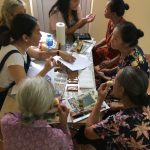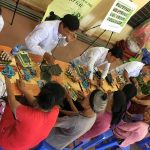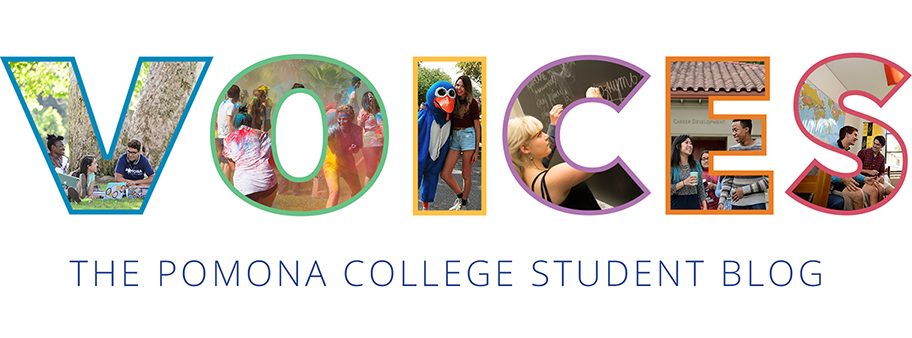By Laura Zhang ‘19
Believe me, if someone had told me when I came to Pomona that I would spend my summer after junior year working on a 5-week project with an animal welfare organization in northern Vietnam I wouldn’t have believed them for a second. Now, in my senior year, I’ve had the experience of taking a transformative class that led to an amazing opportunity abroad.
When I was in my first year at Pomona, the Seeley Mudd Building was home to science classrooms and administrative offices. After a generous donation from trustees Rick and Susan Sontag, though, the Hive (or, the Rick and Susan Sontag Center for Collaborative Creativity) was created as an open-space, white-walled hub. The goal of the Hive was to provide a non-academic environment where students from all five Claremont Colleges could pursue out-of-the-box approaches to problem-solving, and creatively flex their minds.
Since its founding however, many people heard about the space, but did not know anything about the Hive other than it was a place with free paint and a cool button-pressing machine. Only in a very brief, passing conversation with a friend on Marston Quad, did I hear that the Hive offered a class called “Human-Centered Design” or HCD.* By the time my registration period opened, the class was already full, but I PERMed anyway, and managed to score a spot. (PERMing is the Pomona way to request a spot in a class that is full by emailing the professor.)
Long story short, I took this eye-opening class, which was different from traditional academic courses in that it was entirely project-based. Through interviews and group brainstorming, I had first-hand experience employing the HCD process and an opportunity to meet many new 5-College (5C) friends (one who would end up joining this trip!). I also met three amazing instructors. One of the instructors, Shannon Randolph, had extensive experience living and working abroad. Her global work piqued my interest, and towards the end of the semester we began toying with the idea of spending a summer in Vietnam.  The plan was to continue the last project she had been working on with the animal welfare organization, AnimalsAsia, which focuses on ending bear bile farming in Vietnam.
The plan was to continue the last project she had been working on with the animal welfare organization, AnimalsAsia, which focuses on ending bear bile farming in Vietnam.
In mid-January, I applied for the Pomona College Internship Program (PCIP) International, which is an incredible resource for funding more tailored independent projects and internships. At that point, we had a general vision for the trip, but it wasn’t until Shannon and I began scheduling meetings with potential trip attendees that we began really shaping what this experience would look like. Fortunately, after interviewing for and securing PCIP International funding, the Vietnam trip was a go!
 Everyone interested in the trip came in with their own interests and foci (environmental policy, graphic design, etc.). Mine was health, and, more specifically, how perceptions of health differed across cultures. My Scripps HCD classmate recommended the book, The Spirit Catches You and You Fall Down: A Hmong Child, Her American Doctors, and the Collision of Two Cultures. Written by anthropologist Anne Fadiman, this book follows the lives of the Lees, a Hmong refugee family (an ethnic group originally from northern Vietnam/China), who lived in Merced, California, and had an 18-month old daughter, Lia, who was severely epileptic. The Lees and the Merced county hospital doctors often had difficulty agreeing on the methods used to treat Lia’s condition due to cultural and language barriers, and these misunderstandings led to extreme tension and even conflict between the two parties who only thought they were doing what was “best” for Lia.
Everyone interested in the trip came in with their own interests and foci (environmental policy, graphic design, etc.). Mine was health, and, more specifically, how perceptions of health differed across cultures. My Scripps HCD classmate recommended the book, The Spirit Catches You and You Fall Down: A Hmong Child, Her American Doctors, and the Collision of Two Cultures. Written by anthropologist Anne Fadiman, this book follows the lives of the Lees, a Hmong refugee family (an ethnic group originally from northern Vietnam/China), who lived in Merced, California, and had an 18-month old daughter, Lia, who was severely epileptic. The Lees and the Merced county hospital doctors often had difficulty agreeing on the methods used to treat Lia’s condition due to cultural and language barriers, and these misunderstandings led to extreme tension and even conflict between the two parties who only thought they were doing what was “best” for Lia.
As someone who wants to pursue a career in medicine, I had been thinking a lot about what it meant to provide the “best” healthcare. Although Lia’s case was an extreme case study, her story exemplified how cultural insensitivity and biased judgments from healthcare professionals in the American medical system could inhibit extremely competent doctors from providing the highest level of healthcare for all patients. It also highlighted my own lack of experience and biases, which I felt I needed to address in order to minimize my chances of repeating the same oversights as the doctors in Merced.
How does all of this fit in the scope of AnimalsAsia’s mission?  It just so happens that the primary reason that moon bears are captured from the wild, and kept in tiny cages on bear farms (the owners are called bear farmers), is for their bile. Bear farmers extract the bile from the bears’ gallbladders (an extremely painful process), and later sell the bile to people who use bear bile as part of their traditional medicine routines. While it is currently illegal to extract bear bile in Vietnam, it is not illegal to keep the bears in captivity in these tiny metal cages. The only way that the bears can be rescued is if the bear farmers are caught in the act of bile extraction, which rarely happens.
It just so happens that the primary reason that moon bears are captured from the wild, and kept in tiny cages on bear farms (the owners are called bear farmers), is for their bile. Bear farmers extract the bile from the bears’ gallbladders (an extremely painful process), and later sell the bile to people who use bear bile as part of their traditional medicine routines. While it is currently illegal to extract bear bile in Vietnam, it is not illegal to keep the bears in captivity in these tiny metal cages. The only way that the bears can be rescued is if the bear farmers are caught in the act of bile extraction, which rarely happens.
One way that AnimalsAsia has tried to advance the rescue of these bears is through their Health Day interventions. These interventions are targeted toward the communities around Hanoi that still keep bears and have residents who use bear bile. At these Health Days, AnimalsAsia brings in official traditional medical practitioners (TMPs) from the Hanoi Traditional Medicine Association (TMA).  The TMPs offer free walk-in consultations to any residents in the village and prescribe herbal alternative medicines for conditions that patients may otherwise use bear bile to treat. Patients are educated about different herbal plants that they can grow in their garden and given a small bottle of herbal alternative to bear bile to try for free.
The TMPs offer free walk-in consultations to any residents in the village and prescribe herbal alternative medicines for conditions that patients may otherwise use bear bile to treat. Patients are educated about different herbal plants that they can grow in their garden and given a small bottle of herbal alternative to bear bile to try for free.
The hope is that through these Health Days, people will find replacements for bear bile or other animal-sourced products to maintain their health and stop using bear bile altogether. In turn, by reducing the demand for bear bile, bear farmers will be more willing to voluntarily give their bears up. Once rescued, the bears live out the rest of their lives in AnimalsAsia’s beautiful Tam Dao sanctuary, where they are cared for by an amazing, international caretaking team.
As any type of social change, and conservation particularly, is a slow progressing field, we knew we couldn’t solve the problem in just one month. Our goal was to implement the human-centered design process and identify key places where the Health Day interventions were working, and where they weren’t.
You can hear about the outcome of our project in the Hive’s newsletter here!
What I learned through this process:
Lesson number one. Developing your own independent project, especially an international one, is a lot of work! This should be neither surprising nor a deterrent, but keep in mind that writing funding proposals is just the beginning. The real work starts after your project gets funded. I submitted my proposals in January, and continued planning the logistics until the day we left for Hanoi in mid-June. Definitely start planning early, and start contacting partner organizations and garner support for your proposal at least 3-4 months in advance!
Lesson number two. This was my first time working through such an extensive independent project, and I found it can be both exciting and overwhelming to drive your own ideas forward for so long. In the moments when you feel worn out from re-explaining your project to every single person, take a step back to remember why you want to do the project, and evaluate your own personal investment in making it happen. In the end, I found that one of the best skills I gained was having the confidence in myself to pursue an opportunity that was not part of a traditional career or academic path.
Lesson number three. Pick a few main people to work with. Many people may express lots of interest in your project and want to be involved … for a little while. Two weeks later, they have changed their mind. This was stressful and frustrating for me because I felt that I could not gauge who was really in it for the long haul. Each time someone dropped out, I was set back in planning and had to go search for new partners—which leads me to lesson four.
Lesson number four. Be patient. There are so many things that are out of your control, and sometimes it just takes those factors lining up to get the right team and project together. My team (and I couldn’t have asked for a better one) came together at the very last moment, when I was truly doubting whether I was going to find anyone with whom to partner. Keep reaching out to people, and give yourself wiggle room to adapt to new developments. Since you are working on this over the course of a few months, it is likely that your own personal interests will change as well!
*You can learn more about the Human-Centered Design (HCD) class in my post on the Hive’s website (https://creativity.claremont.edu/).
